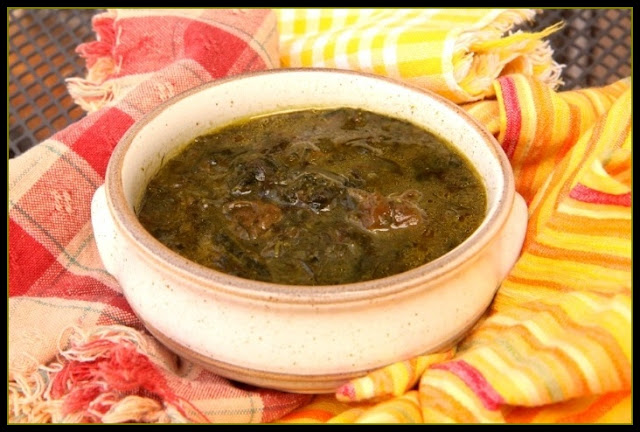Wild Things Round Up: Low-Cost Meals (Autumn Edition)
I was going to write a nice introduction about how we all need economical meal choices from time to time. But the truth is that I'm writing this post on this day in direct response to the fact that people who rely upon SNAP (you might know the Supplemental Nutrition Assistance Program as food stamps) in the US, including so many children and seniors, will have less assistance starting today. This is because a temporary boost as part of the Recovery Act is over. But to people who need the assistance, it is effectively a cut. And food prices are higher than ever.
I'm putting together this list of ultra low-cost meals supplemented with foraged produce specifically for people who may be turning to wild foods for the first time because there is nowhere else to turn. Adding wild foods to inexpensive proteins and starches like eggs, beans, rice, and potatoes can be a great way to fill bellies. What's more, humble weeds are likely more nutritious than anything that can be purchased at a store, as is pointed out in this article. As a person who eats as much wild food as possible, I can vouch for how delicious they are as well.
Before I share the recipes, I want to cover the basic rules of foraging. First, be very careful not to eat anything that has been sprayed by weed killer or any other chemicals. Also, don't use food that grows next to a road, has be contaminated by dogs, or is growing in a place that looks to be hazardous. Second, never eat any wild plant that you haven't identified with 100% certainty. There are great resources online to help with plant identification, including forums with active foragers such as Edible Wild Plants on Facebook. Take a look at this fantastic list of online plant ID resources compiled by Identify That Plant. Libraries are another great way to find guides to identifying plants. For the best outcome, try to use field guides that are specific to your area. Follow this link for some other sensible guidelines for foraging.
Wild edible plants can be found most anywhere, even in the heart of cities. I always look for places that it looks like no human cares about, like forgotten fields and vacant lots. I tend to stay away from places humans love, any place that mows the lawn frequently or looks manicured.
The trick to cooking with wild foods is knowing how to substitute them into traditional recipes. For example, wild greens can be substituted in recipes for spinach, kale, and collard greens. There are so many edible wild foods out there, but today I'm going to focus on two leafy green plants that are widely available, even late into autumn in many colder environments.
Because most everyone knows how to identify them, dandelions make an excellent first plant to forage. Every part of dandelions are edible. In case you are uncertain about identifying dandelions (you might be surprised how many plants resemble dandelions), look here.
Dandelion Greens and Garlic Soup
Pasta with Dandelion Greens
Dandelion Greens and Bean Soup
Dandelion Greens and Buds Baked Omelet
Pumpkin Dandelion Soup and Split Pea Dandelion Soup
Dandelions and Rice
Dandelion Greens Potato Salad
Dandelion and Potato Soup
Colcannon with Dandelion Greens
Curried Red Lentil Soup with Dandelion Greens
Roasted Dandelion Root Coffee Substitute
Dock (Rumex spp.) can be another wonderful wild green to use in the kitchen. Where it grows, it is usually quite abundant. Because it is high in oxalic acid (don't let that scare you, as spinach is, too), it is better to eat dock cooked, and never eat large quantities in one sitting. Learn more about dock here.
Dock Enchiladas
Pizza with Dock and Potatoes
Dock Stewed with Pig's Feet
Dock Cream Cheese Spread and Stuffed Dock Leaves
Beans and Dried Dock
Iron-Rich Dock Seed Vinegar
Dock au Gratin
Dock "Saag Paneer"
Dock Dolmas
Dock Seed Crackers
Nuts usually take some work to process, but they are high in calories.
Pecans
Black Walnuts
Pine Nuts
Foraged fruit can be an excellent source of food. Wild and feral trees can be found, but often the best fruit trees are in people's yards. All you have to do is knock on the owner's door and ask permission to pick their fruit. Often, the owner is happy to have someone use the fruit, or just to keep there from being a mess in their yard. Other times, they say no, and that's OK, too. Many areas have maps that show where there are yards with available fruit. Read this story about finding free fruit in urban settings.
Fallen Fruit
Neighborhood Fruit
Euell Gibbons famously forced dandelion roots to grow in winter in his book Stalking the Wild Asparagus. You can read this article about the practice. Similarly, there are many conventional vegetables that will regrow from kitchen scraps.
Very inexpensive meals can be made by combining foraged foods with broth made from bones. Bone broth is rich in gelatin and minerals, and can be an excellent source of nutrition in lean times. Read more about bone broth.
This part isn't related to foraging, but I'm going to include it because this is the autumn edition, which is also the start of cold and flu season. Here are some cold remedies that can be made with ingredients found in the grocery store.
Lemon Ginger Honey Tea
Spicy Cold Remedy
Garlic Remedy
Bonus! I asked my foraging friends to share their favorite low-cost meals, and here's what they shared.
Roasted Lamb's Quarter
Leaf Concentrate
Wild Mini-Frittatas
A Culinary Study of Plantain
Goutweed Omelet (also excellent with fresh dandelion flowers)


